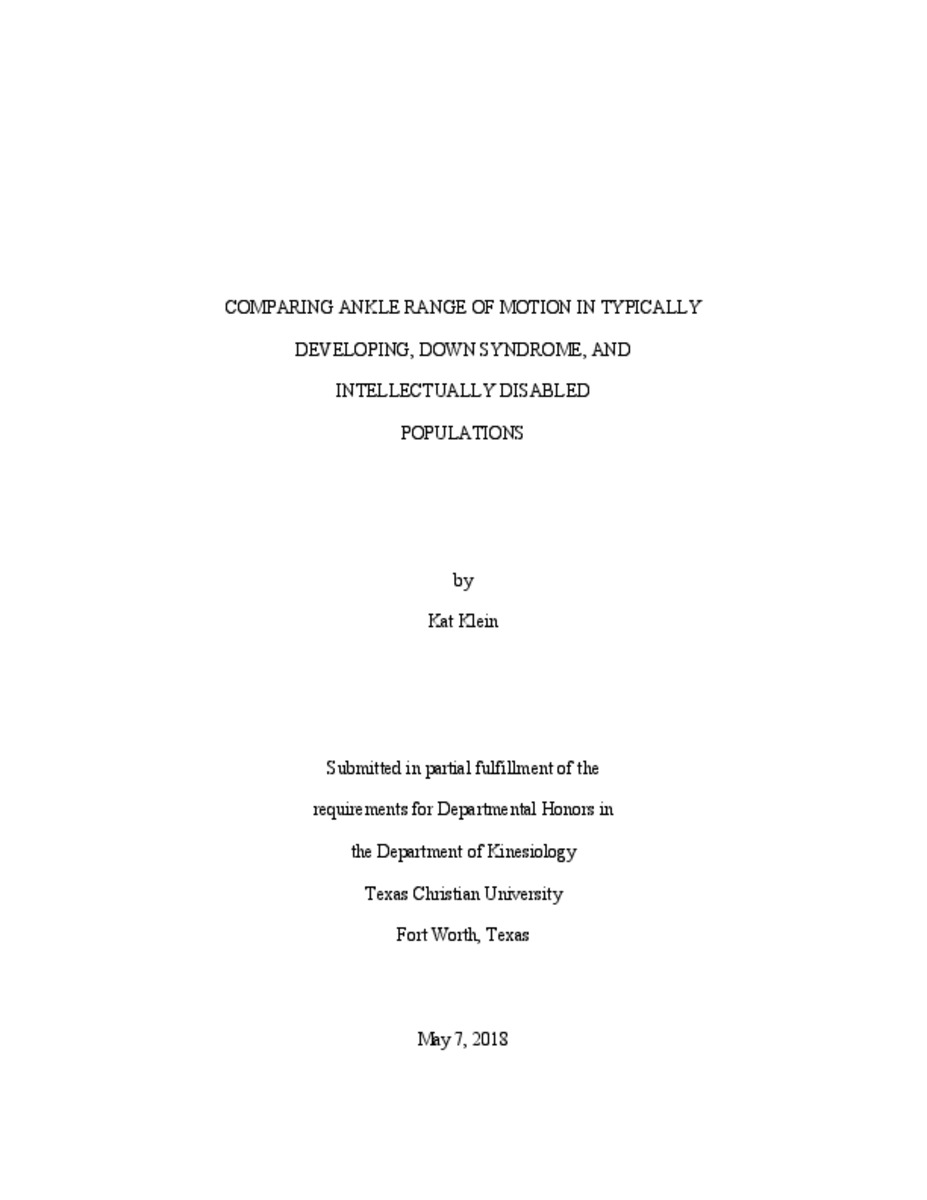Comparing Ankle Range Of Motion In Typically Developing, Down Syndrome, And Intellectually Disabled PopulationsShow full item record
| Title | Comparing Ankle Range Of Motion In Typically Developing, Down Syndrome, And Intellectually Disabled Populations |
|---|---|
| Author | Klein, Kat |
| Date | 2018 |
| Abstract | The purpose of this study was to identify differences in ankle range of motion (ROM) between individuals with typical development (TD), Down syndrome (DS), and intellectual disabilities (ID). This is the first step in obtaining an understanding of the role ankle ROM and instability have on balance. Fifty-one individuals (ages 20-50, 16 TD, 14 DS, and 21 ID) voluntarily participated. Ankle ROM (active eversion, inversion, plantarflexion, dorsiflexion) was measured using a goniometer. Descriptive statistics (means and standard deviations) were used to analyze the data. All means for DS and ID fell below the reported Center for Disease Control and Prevention reference values. A one-way Analysis of Variance (ANOVA) determined group differences, and a Scheffe post-hoc determined significance levels (p < 0.05 & 0.01). Results showed statistical differences of p < 0.05 for: TD and ID left ankle eversion, TD and DS left/right plantarflexion. Results showed differences of p < 0.01 for: TD and ID left/right inversion and left/right plantarflexion, ID and DS left plantarflexion. Statistical significance was observed for all movements between at least two populations, but no statistical significance was observed for dorsiflexion among any population. Individuals with DS and ID have cognitive deficits, while only individuals with DS have physical/motor deficits. Results showed that DS and ID were statistically similar, which indicates a cognitive effect as opposed to motor/phenotypic. The motor/phenotypic effect would be observed if ID and TD were statistically similar, since both groups do not have motor deficits. Future research should investigate ankle ROM alongside strength and balance to determine which factors to target during balance intervention. |
| Link | https://repository.tcu.edu/handle/116099117/22408 |
| Department | Kinesiology |
| Advisor | Esposito, Philip |
| Additional Date(s) | 2018-08-19 |
Files in this item
This item appears in the following Collection(s)
- Undergraduate Honors Papers [1362]
© TCU Library 2015 | Contact Special Collections |
HTML Sitemap



